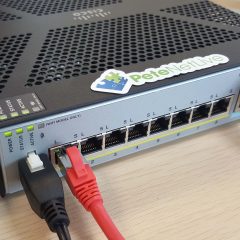Cisco ASA Domain Authentication and Trust (Allowing)
ASA Domain Authentication KB ID 0000973 Problem I cringed this morning when I was asked about this, last time I had to get a client to authenticate to a domain through a firewall, it was ‘entertaining’. The problem is Windows loves to use RPC, which likes to use random ports, so to make it work you either had to open TCP ports 49152 and 65535 (Yes I’m Serious). Or you had to registry hack all your domain controllers...
You were not connected because a duplicate name exists on the network
Duplicate name exists KB ID 0000991 Problem I hadn’t seen this myself but it was asked in a forum the other day so I replicated it on the test bench. You were not connected because a duplicate name exists on the network. Go to System in Control Panel to change the computer name and try again. or You were not connected because a duplicate name exists on the network. If joining a domain, go to System in Control Panel to change...
Printers “Some Of These Settings are Managed By Your Organisation”
Managed By Your Organisation KB ID 0001899 Problem When attempting to add a printer, or engage with the printer settings dialog, you may see. Some Of These Settings are Managed By Your Organisation Solution : Managed By Your Organisation This is usually because a policy is being applied, (or has been applied) that is making a change in your registry, to the following key. HKEY_CURRENT_USER > Software > Microsoft > Windows...
Windows Server – Install and Configure NDES
KB ID 0000947 Problem NDES, is the name for what we used to call MSCEP, which was an ‘add-on’ for the Server 2003 family of servers. In Server 2008 it was renamed to NDES. It is a role service that runs on a Certificate Services Server, and is used to create a registration authority (RA) that can issue certificates from your PKI infrastructure to network devices, i.e. Routers, Firewalls and Switches. Solution Installing...
Windows Client(s) not ‘appearing’ in WSUS
KB ID 0000591 Problem Before you start troubleshooting clients, how long have you waited? I usually setup and configure WSUS up at the start of a job, then leave it alone for a few DAYS, before I start worrying. Here are the steps I usually follow to get the machines listed in the WSUS management console. Solution Before doing anything further, simply try running the following two PowerShell commands, (on the problem client,) and...





